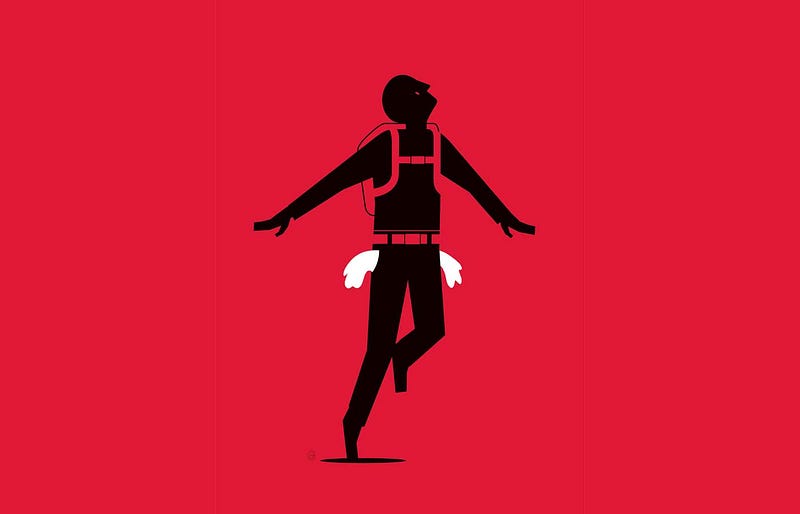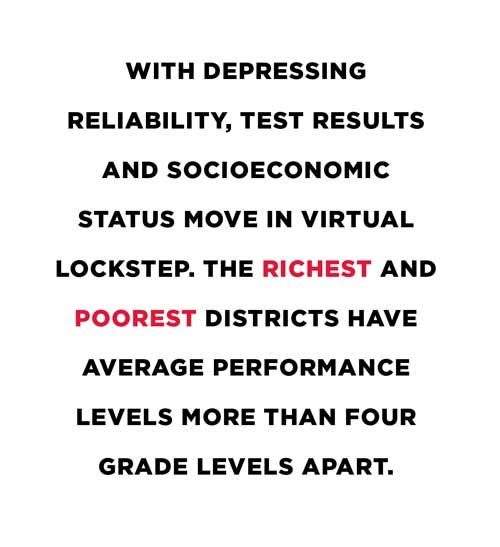While changes in school-focused parenting in the early years together
with extended pre-K opportunities are hypothesized by Stanford
Sociologist Dr. Sean Reardon as resulting in significantly larger shares
of children entering Kindergarten school ready, the growing economic gap between the 'have" and the "haves not"—together with school segregation tied to neighborhood segregation—is the primary culprit for this deepening divide. Dr. Sean Reardon nevertheless cautions:
In addition to parent involvement, equitable school finance, as well. On that note, check out my last post that suggests what you can do about deepening inequality in Texas. Consider testifying on SB17 which if passed, could lead to less funding for public schools due to a reduction in the franchise (business) tax.But even if the rate of improvement continues, it would take another 60 to 110 years to fully close the school readiness gap. In a country spread between Moorestowns and Pine Ridges, parenting alone isn’t enough to overcome inequality.“Figuring out how to sustain it or build on it seems crucial because it suggests you could really do something about this,” he says. “If you can narrow the gap in readiness, you have a much better chance of keeping the gap narrow as kids go through school."
Angela Valenzuela
c/s
The Gravity of Inequality
Sean Reardon’s research reveals a stark reality: Rich students keep climbing while poor ones are falling farther behind.
 |
| Illustrations by Aad Goudappel |
BY SAM SCOTT / STANFORD MAGAZINE Nov.-Dec., 2016
IT’S HARDLY NEWS THAT MONEY MATTERS
in education. Scientists have recognized that affluent students do
better than their poor peers for as long as anyone has had the curiosity
and ability to measure the difference, says Sean Reardon, a sociologist
in the Graduate School of Education.
But
researchers generally assumed the gap was no better or worse today than
decades ago, Reardon says. Certainly that was his sense when a
colleague prodded him to take a deeper look.
A
deft statistical researcher known for making sense of complex data,
Reardon delved into a dozen sets of standardized test scores parsing how
students at the 90th percentile of family income compared with those at
the 10th percentile.
His
findings took him aback. Far from a constant, the gap between haves and
have-nots had yawned into a chasm. In the previous 30 years, the
difference between rich and poor students had grown by about 40
percent — double the gap between black and white students, the far more
familiar yardstick of inequality in American education.
The
numbers didn’t suggest that the poor were stumbling, he says; rather,
the rich were soaring ahead. In a period during which wealth has
concentrated in the highest income brackets, the affluent are
increasingly focusing their resources to give their young children a
running start, with everything from more reading time to private
tutoring.
“With
a college degree insufficient to ensure a high-income job, or even a
job as a barista, parents are now investing more time and money in their
children’s cognitive development from the earliest ages,” Reardon wrote
in a subsequent essay. “But even though middle-class and poor families
are also increasing the time and money they invest in their children,
they are not doing so as quickly or as deeply as the rich.”
Perhaps,
he continued, society should take a cue from the affluent and invest
more fully in educational opportunities for children from the day they
are born.
Published
in 2011, at the tail end of the Great Recession and amid the rise of
the Occupy Wall Street movement, Reardon’s findings resonated inside
academia — the paper has been cited more than 700 times — and beyond. An
account of the findings landed atop the front page of the New York Times, helping mark Reardon as a keen observer of inequality and education in America.
“He’s
had a huge effect not only on scholarship but on the way people in
public life think about these problems,” says Robert Putnam, a Harvard
political scientist best known for his influential 2000 book, Bowling Alone, on the demise of American civic life.
Putnam calls himself a latecomer to studying inequality — but once he dove into the area for work leading to his 2015 book, Our Kids, he was amazed by the ubiquity of Reardon’s research. “Everywhere I’d go there’d be another sign saying ‘Reardon was here.’ ”
Last
spring, Reardon, with a team of collaborators, released his most
detailed look yet at disparity across American schools, drawing on a
complex patchwork of scores from more than 200 million reading and math
tests taken over five years by more than 40 million children in third
through eighth grade.
It’s
a mountain of data that could take lifetimes to fully mine, but perhaps
one image gives its essence — a scatter graph plotting the performance
of 11,280 districts against their socioeconomic status.

At
first blush, the explosion of dots — each one a district — looks like a
snapshot of the Milky Way, but a pattern is soon obvious. With
depressing reliability, test results and socioeconomic status move in
virtual lockstep. The richest and poorest districts have average
performance levels more than four grade levels apart.
“That’s
the equivalent of sixth graders in an affluent community understanding
algebra, geometry and even simple statistics, while sixth graders in the
poorest areas struggle to master fractions,” Reardon says.
Previously,
such nationwide comparisons have been thwarted by the profoundly
different ways states administer and measure tests, an obstacle
Reardon’s team overcame by essentially conjuring ways to align state
test results to a common national scale.
“The
idea you can now say unequivocally across 11,000 districts that this is
a pattern, to me that is what is so powerful,” says Prudence Carter,
who recently left Stanford to become dean of the Graduate School of
Education at UC-Berkeley and who counts Reardon as a good friend. “It’s
not just a sample. It’s not just a case study. It’s the reality.”
The results, which the New York Times
published in an interactive online graphic, also show the stubborn
persistence of racial achievement gaps. The only district where blacks
don’t trail whites is in Detroit, and that, Reardon says, is because
there, everybody is flailing. Some of the largest gaps exist in
prosperous university towns like Berkeley, Evanston, Ill., and Chapel
Hill, N.C.
The
analysis isn’t intended as an atomically detailed confirmation of race
and poverty as destiny. Despite obvious trends in the data, there is
variation — and possibly clues. In Massachusetts, for example, where
funding is adjusted to reduce disparities across districts, schools
generally outperform their California counterparts. A few poor
districts, like in Steubenville, Ohio, perform above grade level. And in
more segregated areas, racial achievement gaps are exacerbated.
Such
insights aren’t solutions, though they might lead that way. “If you
have 12,000 school districts, you can start to potentially tease apart
the features of a community that are associated with better outcomes for
kids,” Reardon says. “Are they things that happen in schools? Or are
they things that happen in families? Or happen in the neighborhoods?”
Reardon’s
younger brother is a solar astrophysicist. In his field, moving forward
requires ever more powerful telescopes. In a way, the database marks
Reardon’s attempt at a similar advance. In the next year, he expects his
team to have scores broken down by race, gender, ESL and other
groupings for every public school in the country.
 Reardon’s
path to his endowed position at Stanford as a professor of poverty and
inequality was a winding one. As an undergrad at Notre Dame, he majored
in a great books program studying the Western canon, published poetry
and minored in honors mathematics. His intention was to get a doctorate
in comparative literature.
Reardon’s
path to his endowed position at Stanford as a professor of poverty and
inequality was a winding one. As an undergrad at Notre Dame, he majored
in a great books program studying the Western canon, published poetry
and minored in honors mathematics. His intention was to get a doctorate
in comparative literature.
But
the summer after graduating, he began to crave something more engaged
with the “real world.” Too late in the year to apply for the Peace Corps
or other service organizations, he looked for advice from his old
Jesuit high school outside Cincinnati.
They
offered him a list of some 30 other Catholic schools around the country
where his skills might be needed. His eyes zeroed in on one that
sounded nothing like the rest: Red Cloud Indian School.
And
so Reardon soon found himself at a Catholic school on the Pine Ridge
Indian Reservation in Pine Ridge, S.D., located in the poorest county in
the United States. For $100 a month, plus room and board, he taught
English, physics and photography, and drove the school bus.

It
was a wonderful experience, he says. The students at Red Cloud were
eager, the community welcoming, and the school, despite nominal tuition
of around $25 a year and the surrounding poverty, well-stocked. An
outgoing priest had made a habit of descending on distant government
surplus sales to build a darkroom, printing press and large telescope.
But
the reality of lives far harsher than his was also obvious. One time he
took students on a field trip to the nearby cemetery, an excursion
planned in connection with poetry readings on death and mortality. It
was soon clear they knew much more about the topic than he did.
In
his own life, death hadn’t yet come closer than the loss of a
grandmother, but his students were pointing out graves of uncles and
baby siblings. That night he got an angry phone call from a mother of a
student outraged at his insensitivity. “I clearly didn’t know what I was
doing.”
After
two years, Reardon was ready to move on, this time to a PhD program on
the history of consciousness. But late-blooming anxiety about walling
himself off in academia again led to a last-minute search for a teaching
job, this one ending at a well-heeled Quaker school in Moorestown,
N.J., outside Philadelphia.
His
leafy new surroundings weren’t unlike his hometown of Wyoming, Ohio,
but he was seeing the area with new eyes. In Pine Ridge, with staggering
unemployment, there were scant examples of the path he had taken for
granted — studying hard, going to a good college and getting a good job
in your own community. In Moorestown, there hardly seemed a path that
didn’t lead in that direction.
He
would wander some more. He returned to Notre Dame to get a master’s in
international peace studies and then headed to the Harvard Graduate
School of Education.
While
other factors figured in, too, his experiences in Pine Ridge and
Moorestown shaped his awareness of the vast differences in America,
which continues to motivate him. “Those are really different worlds, and
the kinds of opportunities kids have in those places are dramatically
different.”
His
interest remains very much at the poles. People often assume the roots
of society’s problems lie with what’s happening — or not
happening — among the poor, he says. But as the increasing socioeconomic
gap suggests, the cause can just as easily be at the top.
Case
in point: Studies by Reardon and Kendra Bischoff, MA, ’08, PhD ’11,
reveal spiking economic segregation in America. In 1970, 15 percent of
families lived in neighborhoods judged either affluent or poor. By 2009,
that share had more than doubled.
As
a consequence, the mixed-income middle has been disappearing, and with
it, a shared destiny that once made it more likely the advantages of the
rich — like better services and schools and greater access to educated
role models — spill over to the poor. It is a trend caused in no small
part by the rich removing themselves to wealthy enclaves.
“We
do a lot of pointing at the problem, the problem must be there, let’s
fix those communities,” Reardon says. “If we didn’t have those
communities because we had more integrated places, there’d be no fixing
to do.”
Such
dramatic changes in society and schools are troubling to him, but they
are also strangely comforting. If something like the relationship
between family income and educational success can transform in a
generation, he says, it can also be changed back.
Indeed
that may be happening. In a study released last summer, five years
after his acclaimed paper on the growing socioeconomic gap, Reardon and
collaborators from the University of Virginia and Columbia University
found that, contrary to the researchers’ expectations, low-income
kindergartners were entering school with stronger “school readiness”
scores.
From
1998 to 2010, the school readiness gap between low- and high-income
children narrowed by 10 percent in math and 16 percent in reading. At
the same time, both the white-black and white-Hispanic gaps narrowed by
roughly 15 percent in the same period.
Given
that economic inequality had only increased in the same period, Reardon
had expected to see the opposite. One possible explanation for the
improvement, he says, is better access to public preschools. The
percentage of 4-year-olds enrolled in state-funded preschools has
doubled since 2002.
But
part of the change may also lie in the home. The researchers found that
low-income parents are catching up with more affluent parents on how
much time and energy they spend on reading, working with computers and
other educational activities, like going to the library.
And
that, the researchers suspect, reflects a growing awareness of early
childhood as a crucial period of cognitive development. “Thirty years
ago, it wasn’t necessarily the way working-class families thought about
their kids,” he says. “Now everyone thinks about their kids that way
much more than they used to.”
But
even if the rate of improvement continues, it would take another 60 to
110 years to fully close the school readiness gap. In a country spread
between Moorestowns and Pine Ridges, parenting alone isn’t enough to
overcome inequality.
“Figuring
out how to sustain it or build on it seems crucial because it suggests
you could really do something about this,” he says. “If you can narrow
the gap in readiness, you have a much better chance of keeping the gap
narrow as kids go through school.” •
No comments:
Post a Comment